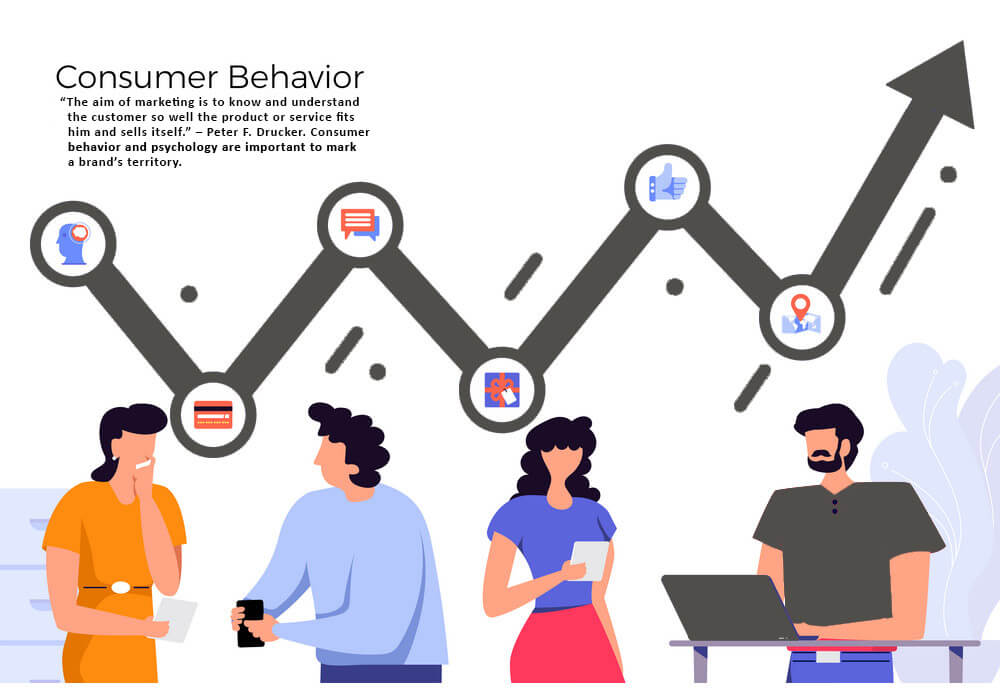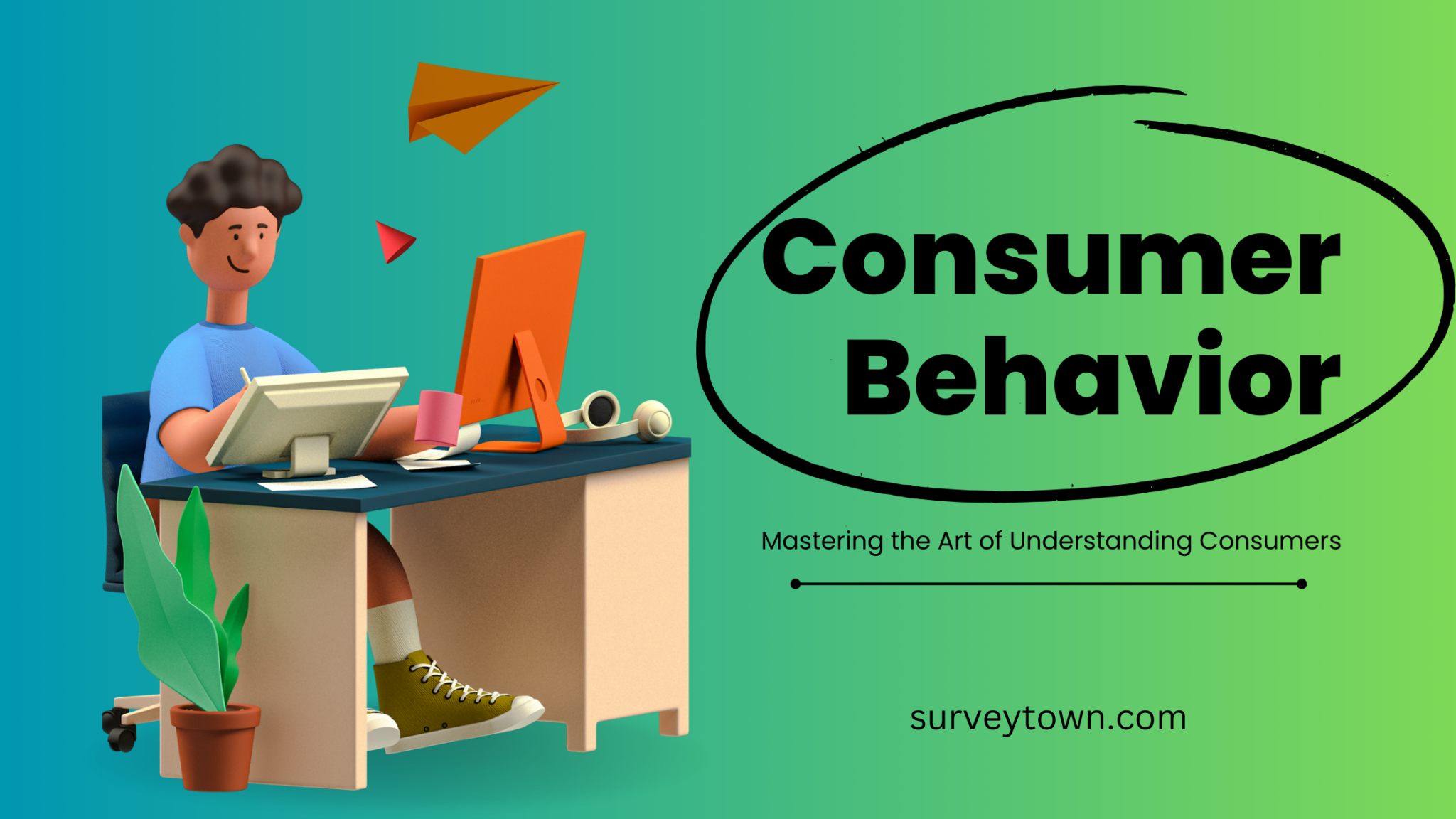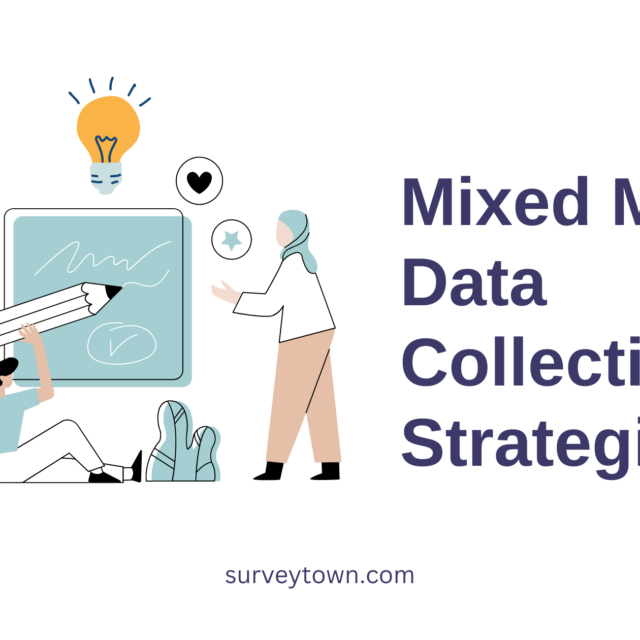Discover the fascinating world of consumer behavior, where every decision is a window into the complex workings of the human mind. As experts in the field, we have dedicated years to unraveling its mysteries and gaining invaluable insights into what drives individuals when they make purchasing decisions. In this comprehensive guide, we will share my expertise with you, providing a deep dive into the study of consumer behavior. Join us as we explore real-life case studies that illustrate how consumers interact with products and services in different scenarios.
The Crucial Role of Understanding Consumer Behavior in Today’s Market
In today’s cutthroat market landscape, businesses must go beyond surface-level knowledge about their customers. By delving into consumer behavior, companies can gain a profound understanding of their target audience’s preferences, motivations, and decision-making processes – giving them a competitive edge like never before.
Let me highlight some key reasons why studying consumer behavior is absolutely crucial for business success:
- Market Segmentation: To effectively reach your target market, it is essential to understand its diverse segments. By analyzing various demographic factors, such as age groups or income levels, that influence consumers’ behaviors and choices, you can tailor your marketing strategies accordingly – creating campaigns that truly resonate with specific customer segments.
- Product Development: The secret to successful product development lies in unlocking consumers’ desires and needs. By tapping into their motivations for buying certain products or switching brands, businesses can identify gaps in the market and develop innovative solutions that meet customers’ expectations – staying one step ahead of competitors at all times.
- Crafting Compelling Marketing Communication: Effective communication starts with understanding how consumers perceive advertising messages. Armed with this knowledge, marketers can create powerful campaigns that strike a chord with their target audience by aligning messaging with consumers’ values and aspirations – forging deeper connections between businesses and potential customers.
- Elevating Customer Satisfaction: Anticipating customer expectations is key to delivering exceptional experiences throughout the buyer journey. Through studying consumer behavior meticulously, organizations gain valuable insights into what customers truly desire, enabling them to exceed expectations and cultivate loyal brand advocates who will eagerly recommend their products or services.
- Gaining a Competitive Advantage: Businesses that invest in understanding consumer behavior gain an invaluable competitive advantage. By staying ahead of market trends and adapting strategies accordingly, companies can position themselves as industry leaders – always one step ahead of the competition.

The Science Behind Consumer Behavior: Mastering the Art of Understanding Consumers
Unlocking the secrets of consumer behavior is essential for businesses to thrive in today’s cutthroat market. By delving into the intricate web of psychological, social, and personal factors that drive consumers’ decision-making process, companies can gain invaluable insights into their target audience and tailor their marketing strategies accordingly.
Psychological Factors
- Motivation: Consumers are fueled by a myriad of motives when making purchasing decisions. These motives can be categorized as physiological, safety, social, esteem, or self-actualization.
- Perception: How consumers perceive a product or service holds tremendous sway over their buying choices. Elements such as brand image, packaging design, pricing, and advertising messages all contribute to how consumers perceive value.
- Learning: Consumers acquire knowledge about products through experience or exposure to information. Savvy marketers capitalize on this by providing positive experiences with their offerings or offering educational content that highlights the benefits of their products.
- Attitudes: Consumer attitudes towards a brand or product wield significant influence over their behavior. Positive attitudes breed repeat purchases and loyalty, while negative attitudes may lead to avoidance.
Social Factors
- Culture: Cultural values, beliefs, norms, and customs exert a profound influence on consumer behavior. Grasping cultural nuances empowers businesses to adapt their marketing strategies accordingly.
- Reference Groups: People often seek validation from reference groups such as family members, friends, and colleagues before making purchase decisions. Influencer marketing has surged in popularity due to its ability to tap into these reference groups’ opinions.
- Social Class: A person’s social class shapes their preferences for specific brands or products. Businesses targeting particular social classes must align themselves with the values associated with those classes.
Personal Factors
- Age & Life Cycle Stage: Different age groups harbor distinct needs and preferences when it comes to the products or services they consume. Understanding these differences enables businesses to tailor their offerings to specific age demographics.
- Occupation & Income: A person’s occupation and income level wield influence over their purchasing power and preferences. Businesses can segment their target audience based on these factors, allowing for targeted marketing campaigns.
- Lifestyle & Personality: Consumers with similar lifestyles or personalities tend to exhibit comparable buying behaviors. By comprehending consumer lifestyles and personality traits, businesses can develop products that align seamlessly with their target audience’s preferences.
Situational Factors
- Purchase Context: The circumstances surrounding a purchase, such as time constraints, location, or occasion, can influence consumer behavior. For example, impulse purchases are often driven by situational factors.
- Social Surroundings: Consumers’ behavior can be swayed by the presence of others in a particular setting. This could include shopping with friends or family members who provide opinions or recommendations.
Theories and Models of Consumer Behavior
- Maslow’s Hierarchy of Needs: This theory posits that individuals possess a hierarchy of needs ranging from basic physiological requirements to self-actualization. Marketers can appeal to different levels of this hierarchy in their messaging, striking a chord with consumers’ deepest desires.
- Theory of Planned Behavior: According to this model, an individual’s intention to perform a behavior is influenced by attitudes towards the behavior, subjective norms, and perceived behavioral control. Marketers can shape consumers’ intentions through persuasive messaging that taps into these influential factors.
- Social Learning Theory: This theory underscores the role of observation and imitation in shaping consumer behavior. Marketers can harness social learning by showcasing positive experiences or testimonials from satisfied customers, inspiring others to follow suit.
How Consumer Behavior Shapes the Market: Unleashing the Power of Understanding
Consumer behavior is not just a fascinating field of study; it holds the key to understanding and shaping market trends. By delving into how customers behave, we can uncover invaluable insights into their motivations, preferences, and decision-making processes. Armed with this knowledge, businesses can craft targeted marketing strategies and offerings that truly resonate with their target audience.
- Embracing Change: Consumer behavior is a fascinating and ever-changing field that encompasses the study of how individuals behave, make decisions, and interact with products and services. Understanding consumer behavior is crucial for businesses to effectively market their offerings, anticipate shifts in demand, and meet the evolving needs of their customers. Technological advancements, cultural shifts, and economic changes constantly shape consumer behavior. By staying informed about these trends, businesses can gain valuable insights into what motivates consumers to purchase certain products or services.
- Decoding Purchase Decisions: In order to effectively market products or services, it is crucial to delve into the mindset of customers and gain a deep understanding of what motivates them to choose one option over another. When conducting research and analysis on consumer behavior, several key factors come into play. Price sensitivity is an important consideration, as individuals may have varying levels of willingness to pay for a particular product or service. Brand loyalty also plays a significant role, with some customers remaining loyal to certain brands due to positive past experiences or emotional connections. Quality perception is another critical factor since consumers often evaluate the perceived quality of a product or service before making a buying decision. It can be influenced by reviews, recommendations from friends or family, and personal experiences. Finally, there’s social influence—people are greatly influenced by their social circles and tend to make choices based on what others around them are doing or recommending.
- Shaping Marketing Strategies: Consumer behavior plays a pivotal role in shaping marketing strategies, as it directly influences every aspect of the process – from crafting compelling advertising messages to determining the most effective promotional activities. By understanding how consumers behave and what motivates their purchasing decisions, businesses can align their marketing efforts with consumer preferences and gain a competitive advantage in today’s dynamic marketplace.
- Cultivating Customer Satisfaction: Satisfied consumers are more likely to become loyal clients who advocate for a brand or business. By understanding the behavioral factors that drive customer satisfaction – whether it’s exceptional service or personalized experiences – companies can elevate their overall strategy for enhancing the consumer experience.
- Cultural Influences at Play: Consumer behavior is greatly influenced by cultural factors, making it a crucial aspect to consider for businesses. The values, beliefs, and norms of individuals have a significant impact on their purchasing decisions. By understanding these cultural influences, companies can effectively tailor their marketing strategies to connect with their target audience in a more meaningful way. When crafting marketing campaigns or developing products and services, it is essential to conduct thorough research and analysis of the cultural trends and behaviors that shape consumer choices.
- Social Media Empowerment: The rise of social media has completely transformed the way consumers behave and make purchasing decisions. It has become an essential tool for businesses to connect with their target audience and gain a deep understanding of their buying behavior. We can confidently say that social media is a game-changer in the world of marketing, and it provides invaluable insights into the preferences and motivations of their customers.

Analyzing Consumer Behavior: Unveiling the Secrets to Success
In today’s fiercely competitive market, understanding consumer behavior is the key to thriving. By unraveling the intricate factors that influence consumers’ decision-making process, businesses can craft targeted marketing strategies and offerings that cater to their audience’s needs and desires. In this section, we will provide expert tips on how to effectively analyze and interpret them.
- Conduct market research surveys to gather valuable insights into consumer preferences and motivations.
- Utilize data analytics tools to track customer behavior patterns across various touchpoints (e.g., website visits and social media interactions).
- Stay abreast of industry trends and changes in consumer behavior through continuous monitoring of market reports and studies.
- Engage with customers through feedback channels like online reviews or focus groups to gain a deeper understanding of their experiences and expectations.
Leveraging Consumer Behavior for Business Success: Unleashing the Power of Understanding
As experts in consumer behavior, we have witnessed firsthand the transformative impact it can have on driving business success. By delving into the minds of consumers and understanding their thought processes, emotions, and purchasing decisions, businesses can craft strategies that cater to their needs and preferences. Here are some invaluable strategies that businesses can employ to harness the insights from consumer behavior:
- Targeted Marketing Campaigns: Through a meticulous analysis of consumer behavior data, businesses gain a deep understanding of their target audience. Armed with this knowledge, they can create personalized marketing campaigns that deliver messages and offers tailored specifically to resonate with customers. This personal touch significantly increases conversion rates.
- Product Development: The study of consumer behavior empowers businesses to develop products or services that perfectly align with customer desires and expectations. By identifying emerging trends and preferences through comprehensive market research, companies can create offerings that address specific needs or alleviate common pain points.
- Elevating Customer Experience: Insights derived from studying consumer behavior enable businesses to enhance every facet of the customer experience journey. Understanding what motivates customers to engage with a brand or make repeat purchases allows companies to optimize touchpoints throughout the entire customer journey for maximum satisfaction.
- Pricing Strategies: Analyzing consumer behavior provides valuable insights into determining optimal pricing strategies based on perceived value and willingness-to-pay metrics. Businesses armed with this information can set competitive prices while maximizing profitability.
- Brand Positioning: In-depth research into consumer behaviors sheds light on how customers perceive brands relative to competitors in the market landscape. This knowledge enables businesses to position themselves effectively by highlighting unique selling propositions that deeply resonate with their target audiences.
- Customer Relationship Management (CRM) Leveraging CRM systems allows organizations to track individual customer behaviors over time and personalize interactions at every stage along the buyer’s journey.
- Social Media Engagement: Social media platforms serve as treasure troves of consumer behavior data, offering insights into likes, shares, comments, and even purchase intent signals through targeted ads or influencer collaborations.
- Data-Driven Decision Making: Harnessing the power of consumer behavior insights empowers organizations to make informed decisions based on concrete data. By analyzing consumer data, businesses can confidently navigate product development choices, devise effective marketing strategies, and implement improvements in customer service.
Tools and Techniques for Studying Consumer Behavior: Unlocking the Secrets to Understanding
As experts in the field of consumer behavior, we know firsthand the significance of employing powerful tools and techniques to gain valuable insights into customer preferences and decision-making processes. In this section, we will share with you a range of methods that are widely used by professionals when studying consumer behavior.
- Surveys are a tried-and-true method for collecting data on consumer behavior. By asking targeted questions, businesses can gather information about customers’ attitudes, motivations, and purchasing habits. Online surveys have gained immense popularity due to their convenience and cost-effectiveness.
- Focus groups involve assembling a small group of individuals who represent your target market. Through guided discussions led by a skilled moderator, businesses can obtain qualitative insights into consumers’ thoughts, opinions, and experiences regarding specific products or services.
- Conducting one-on-one interviews with customers allows for a more in-depth exploration of their behaviors and motivations. These interviews can be structured or unstructured, depending on the research objectives.
- Observational research entails observing consumers in real-life settings without direct interaction or intervention from researchers. By carefully observing how individuals behave while shopping or using certain products/services, businesses can uncover valuable insights into their decision-making processes.
- Big data analysis has become increasingly crucial in understanding patterns of consumer behavior. By leveraging cutting-edge big data analytics tools and techniques, businesses can identify trends and correlations that may not be apparent through traditional research methods.
- Social media platforms provide an abundance of information about customer preferences and sentiments towards brands/products/services through comments, reviews, likes/dislikes, etc. Analyzing social media conversations enables businesses to quickly gauge public opinion effectively.
- Experiments allow researchers to manipulate variables under controlled conditions to observe how they impact outcomes such as purchase decisions or brand perception. A/B testing, on the other hand, involves comparing two versions of a product or marketing campaign to determine which performs better.
- Eye-tracking technology empowers researchers to understand where customers focus their attention when viewing advertisements or browsing products online. This information can help businesses optimize their marketing materials and website layouts for maximum impact.
- Neuromarketing combines neuroscience with consumer behavior research to gain insights into how the brain responds to various stimuli, such as advertising messages or product packaging. Techniques like EEG (electroencephalography) and fMRI (functional magnetic resonance imaging) are used to measure brain activity in response to different stimuli.
- Customer journey mapping involves visualizing the entire customer experience from initial awareness through post-purchase interactions. By understanding each touchpoint along the customer journey, businesses can identify pain points and opportunities for improvement.
The Future of Consumer Behavior: Trends and Predictions
As technology continues its rapid advancement, we can expect an increase in online shopping behaviors among consumers. The convenience factor, coupled with personalized recommendations based on previous purchases, will drive more people towards e-commerce platforms.
Moreover, sustainability has become an increasingly important consideration for many consumers today. People are becoming more conscious of their impact on the environment and seek out brands that align with their values by offering eco-friendly products or supporting charitable causes.
Another trend worth mentioning is the rise of experiential marketing. Consumers now crave immersive experiences rather than just passively consuming advertisements. Brands that can provide unique and memorable experiences will have a significant advantage in capturing consumer attention and loyalty.
In conclusion, understanding consumer behavior is crucial for businesses to thrive in today’s competitive market. By studying the motivations, behaviors, and trends that drive customers’ purchasing decisions, companies can tailor their strategies to meet customer expectations effectively.




